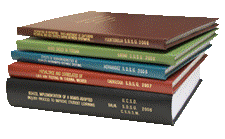Libraries, University of Nebraska-Lincoln

Archival Master’s Theses from the University of Nebraska-Lincoln
Date of this Version
12-1975
Document Type
Thesis
Citation
Thesis (M.A.)—University of Nebraska—Lincoln, 1975. Department of Speech and Dramatic Art (Speech Pathology and Audiology).
Abstract
To date, there is no systemic or reliable procedure for school speech clinicians to evaluate whether or not the elementary age child should be released from or retained in articulation therapy. Traditional techniques of estimating whether or not a child has established automatization of correct phoneme production which will carry-over into speaking situations outside the therapy room have proven to be less than reliable and in many cases impractical. The purpose of the present study was to obtain additional data on a procedure designed to estimate the automatization of correct articulatory production. It was hypothesized that when correct production of the phonemes /r/ and /s/ was not disrupted by auditory masking, automatization of these phonemes may be assumed; when correct production of the phonemes was disrupted, automatization may not be assumed.
Subjects included 76 elementary school children ranging from first to sixth grade with a mean age of 8 years, 6 months. Testing procedures consisted of three separate experimental conditions. Under condition I all potential subjects with both /r/ and frontal /s/ misarticulations were administered the McDonald Deep Test of Articulation under normal testing conditions. After calculating the percentage of correct articulations, those subjects which scored 90% or better correct production of their particular target phoneme (/r/ or /s/) then participated in condition II. The children from both the /r/ and frontal /s/ experimental groups that achieved the 90% correct production criteria during condition I were then divided into two separate groups for testing under condition II. Condition II took place during the same session as condition I and required a readministration of the McDonald Deep Test. During this condition, however, two different sound levels of competing speech (85 dB SPL and 65 dB SPL) were presented binaurally to children in both the /r/ and /s/ experimental groups. The competing speech consisted of a tape recording of several individuals speaking at the same time. Condition III took place in September after three months of summer vacation. During condition III the McDonald Deep Test of Articulation was again readministered without auditory masking to each subject who participated in condition II.
Results demonstrated that for all four experimental groups combined, the subjects’ performance on the Deep Test during auditory masking as a criterion for dismissal was significantly better (P
Advisor: Walter H. Manning


Comments
Copyright 1975, the author. Used by permission.